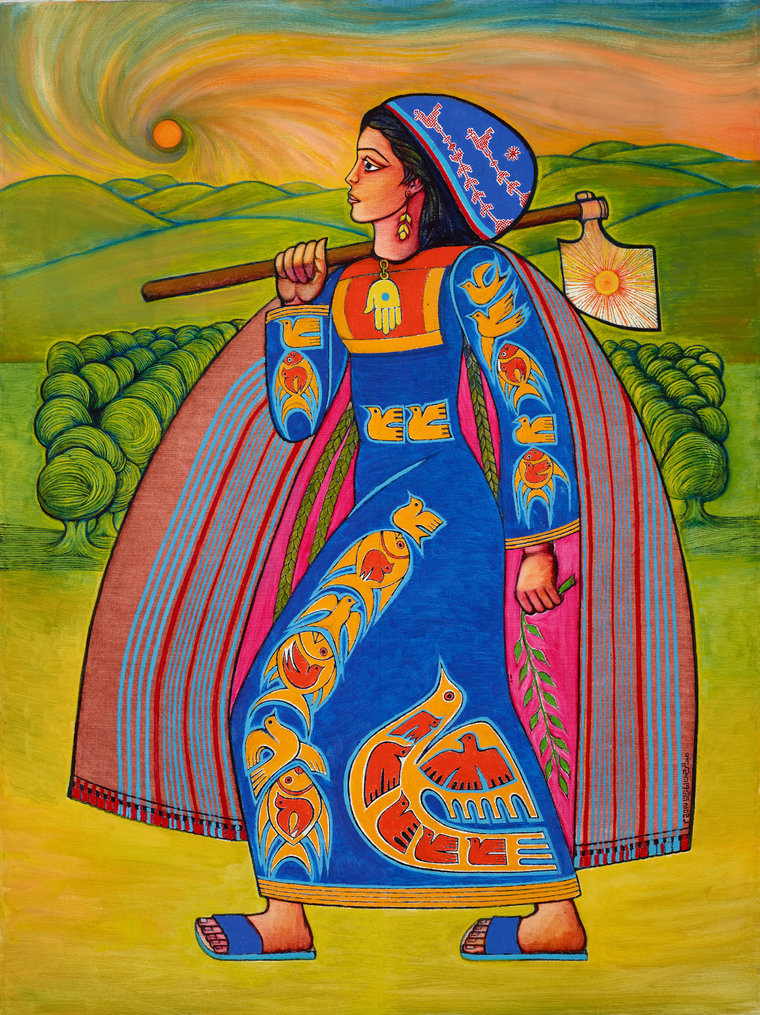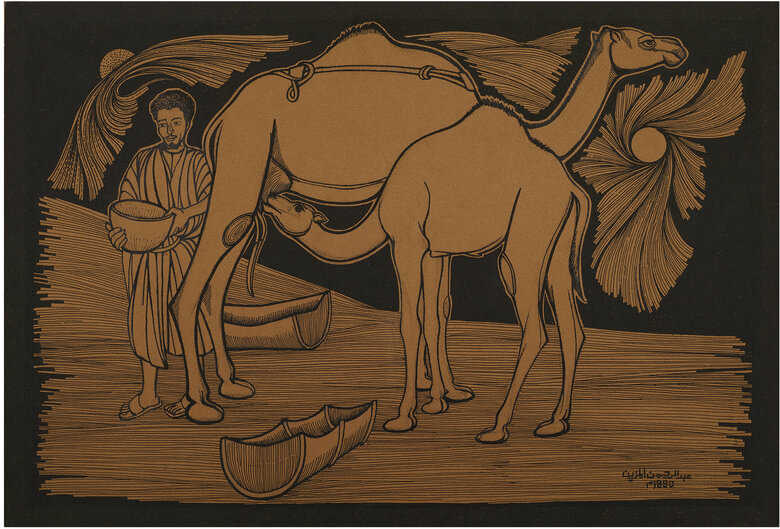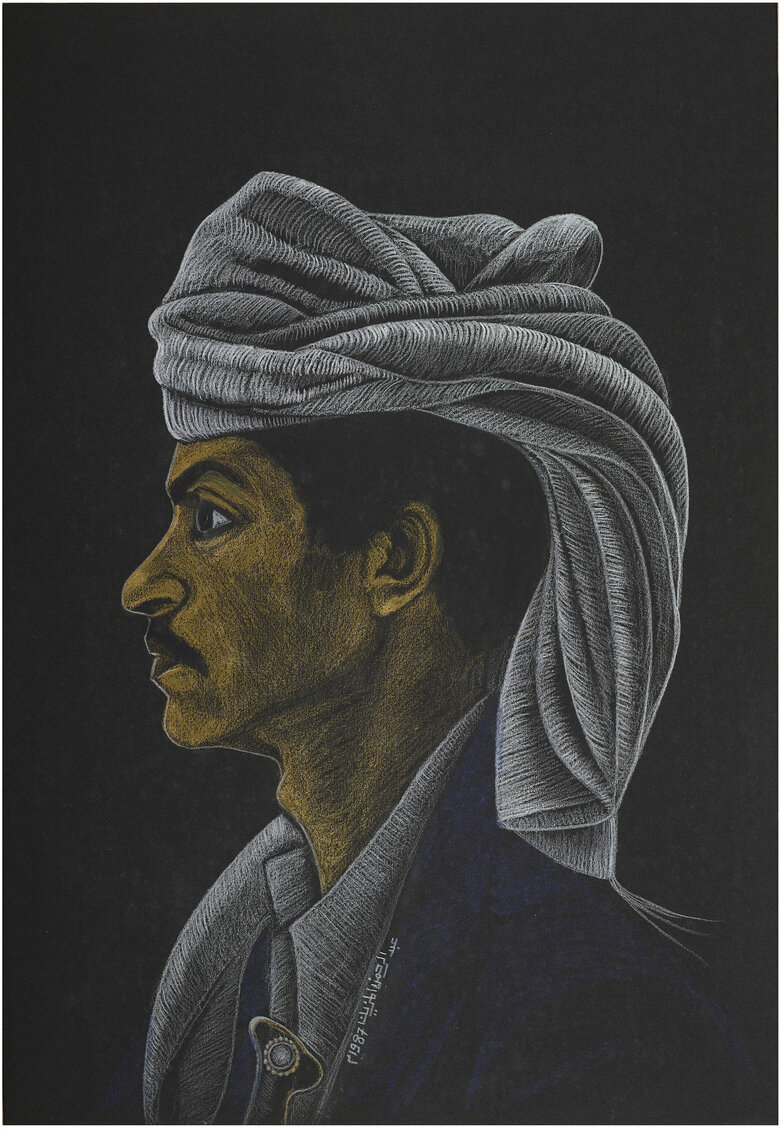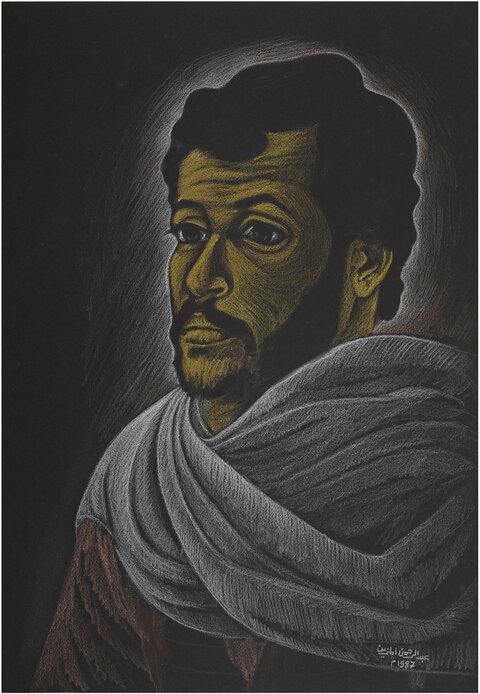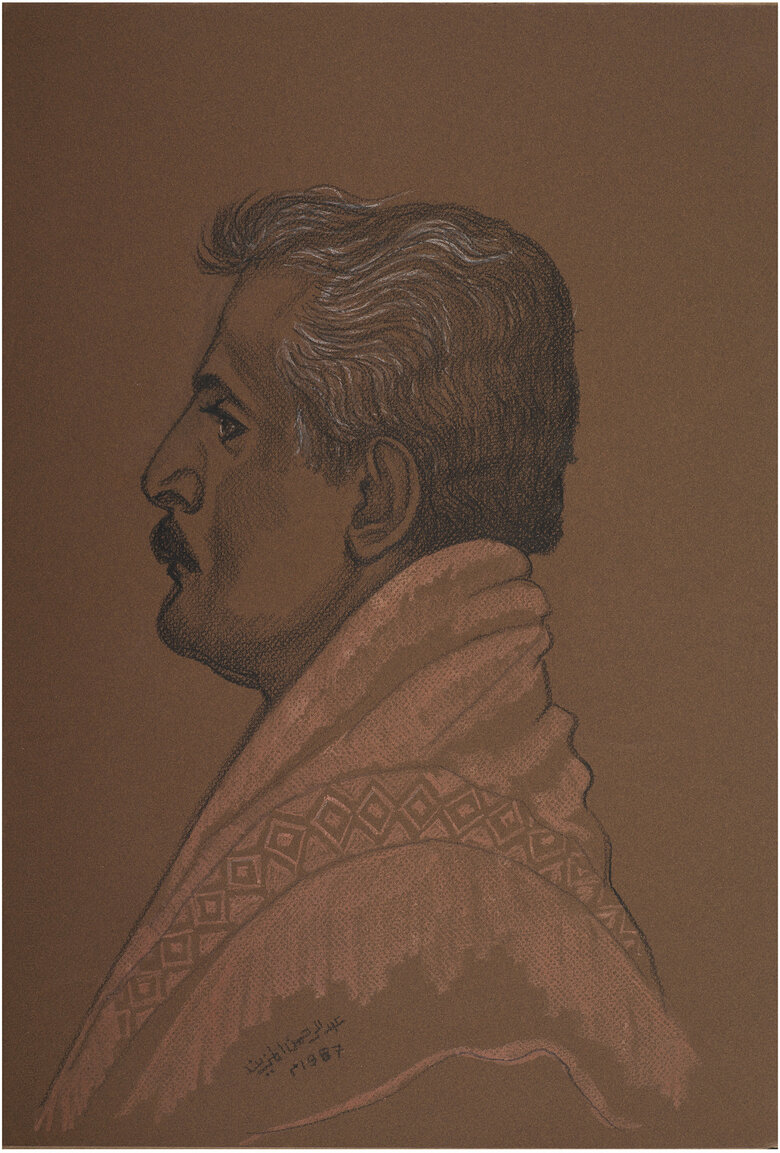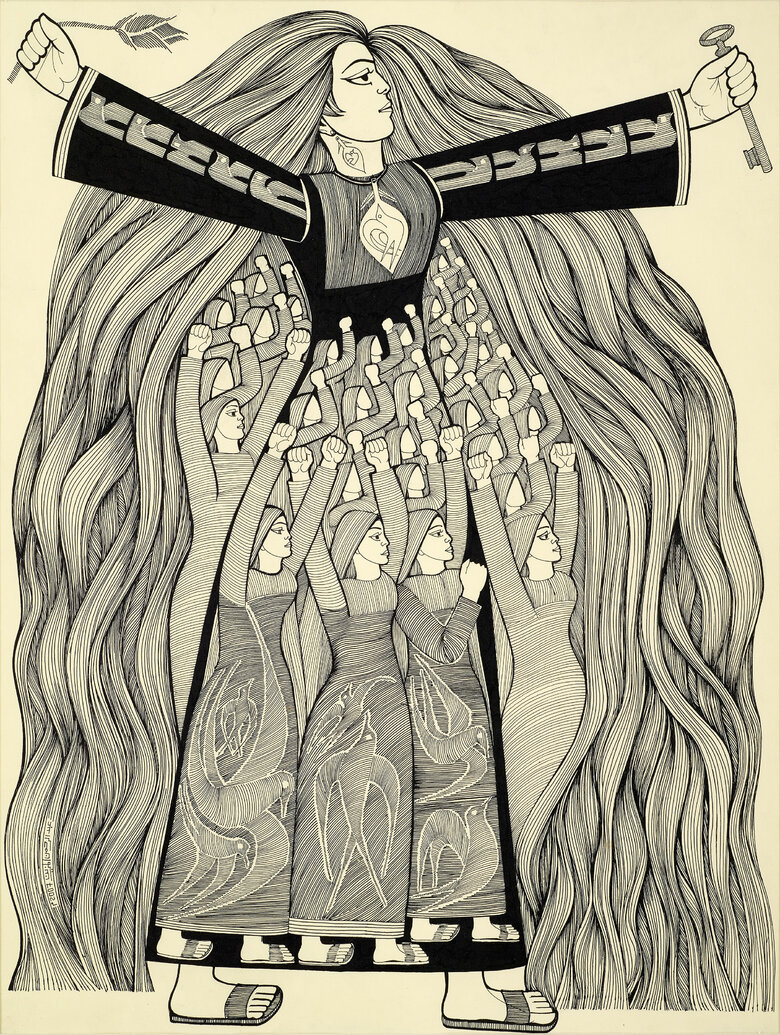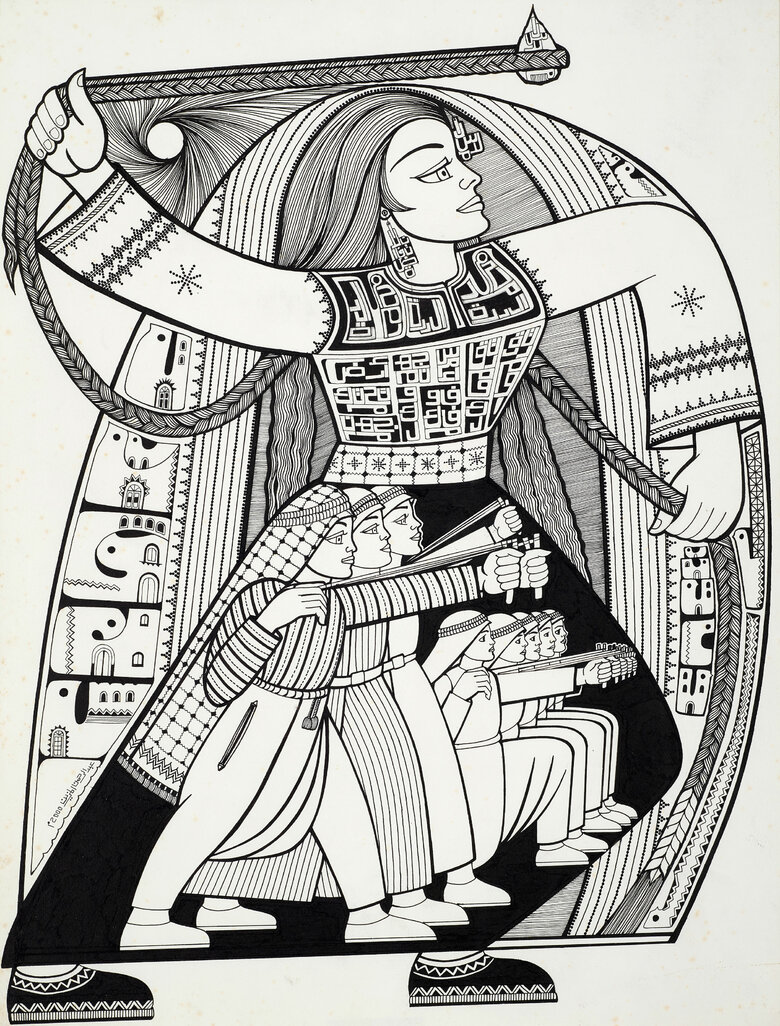Untitled 2013 and Untitled 2014 by Abdelrahman Al Muzayen exemplify the artist’s thematic focus on depicting Palestinian women as the cultural custodians of the Palestinian cause and Palestinian heritage. In terms of style, Al Muzayen does not shy away from the symbolic; he openly revels in it. Palestinian cultural heritage’s survival has always been vital to Al Muzayen, as can be seen through his liberal use of national iconography in these paintings. He deploys material culture, namely Palestinian tatreez (embroidery), as a mode of resistance against the Zionist erasure and appropriation of Palestinian culture. The women here exist in an iconographic bubble of the pre-Nakba period, as evident in two characteristic aspects of these paintings: the embroidered traditional dress and the background.
Al Muzayen was greatly influenced by the work of his mother, a trained embroiderer, as can be seen in the highly masterful and detailed depiction of the tatreez (embroidery) on the garment worn by the women. Culturally, tatreez had a significant role in relation to societal and familial ties since the design, color, and type of fabric of the woman’s thobe were a means to identify her home region and socioeconomic status. By the 1970s, this form of tatreez had become, and to a large extent continues to be, a recurrent symbol of Palestinian resistance.
In Untitled 2013, the collage-like arrangement of the woman’s head is haloed by a circle of olive tree branches, creating a geometrical shape juxtaposed with the rectangular shape of the thobe. The insistence on distinct geometric shapes within this piece helps bring out the intricate patterns of the thobe. Al Muzayen emulates delicate, intricate patterns through his fine brushwork, suggesting a tactile quality to the stitching. The work also highlights the artist’s detailed knowledge of the garment, as seen in how he depicts the chest panel, or qabba, and the floral motifs on the shoulder piece, or radda.
The abstracted motifs of birds, arches, olive trees, and wheat branches are a familiar trope from the artist’s more contemporized symbolic style. In Untitled 2014, the woman’s thobe retains the same qualities as the traditional dress, but the focus is more on the symbolic icons that decorate it. The thobe is adorned with colorful stylized images of fish and birds, while the woman adorned in golden wheat stems for earrings carries an olive branch in one hand. Similarly, in Untitled 2013, the woman with an olive tree halo around her head wears earrings of olive tree leaves.
In both paintings, the background against which these
women are portrayed is infused with political purpose. In
Untitled 2013, the staggered and repeated golden Dome
of the Rock intensifies the assertion that it belongs to
the Palestinians. Similarly, the olive grove background in
Untitled 2014 lays claim to the land through its natural
roots. Both paintings reflect the artist’s lifelong dedication
to freedom and peace.
signed in Arabic and dated '2014' front lower left

